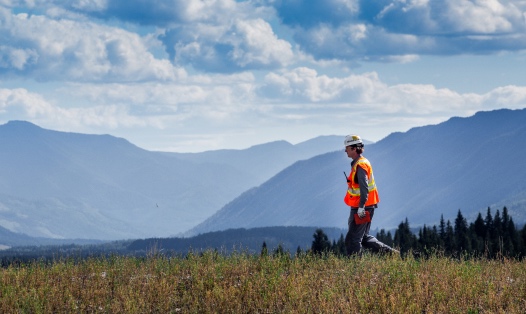Closing a mining operation, especially one that has been active for several decades, requires careful planning and consultation. Our Coal Mountain Operations in southeast British Columbia started as an underground mine in the early 1900s and transitioned to a large-scale open pit operation in the 1940s. In 2008, Teck acquired Coal Mountain as part of our acquisition of the assets of the Fording Canadian Coal Trust; mining at this operation will be completed around the end of 2017.
To prepare for closure, we sought feedback from employees, local Indigenous Peoples, nearby communities, municipal governments, recreational and hunting groups, other impacted groups and individuals to inform planning, including how the land will be used after mining. We are committed to working to minimize the impacts of closure on local communities, and feedback will help us understand what steps may need to be taken to manage impacts from closure. That work includes identifying opportunities for existing Coal Mountain employees to transition to other Teck operations.
Seeking Feedback from Stakeholders and Indigenous Peoples
A key tool for seeking input into Coal Mountain’s closure planning was through a survey sent to local stakeholders, including members of the Ktunaxa Nation, environmental organizations and various outdoor recreation groups, as well as local residents and businesses. The survey was available on our website, distributed to employees at Coal Mountain, and provided at community open houses.
Responses of the survey provided valuable input into the closure planning process. For example:
- 72% of respondents indicated the future use of lands is important to them
- 43% of respondents indicated wildlife conservation is a priority
- 30% of employees were concerned about employment changes
"This feedback provides valuable input into our closure planning, which will also help us to be responsive to issues of importance to the Ktunaxa Nation and other stakeholders. The engagement on our closure planning will strengthen our relationships at Coal Mountain and build support for closure and other activities in the Elk Valley,” said Ed Morash, General Manager, Coal Mountain Operations.
Creating a Closure Plan
The closure plan for Coal Mountain was supported and managed at a site level by a cross-functional group that included experts in mine operations, community, Indigenous Peoples, water reclamation and biodiversity, as well as corporate subject matter experts. In addition to incorporating feedback from Indigenous Peoples and stakeholders, we ensure our closure plans include consideration of water management, stability of landforms and watercourses; socio-economic impacts on local communities; biodiversity; possible post-closure uses; post-closure management requirements; and cost-effective execution.
Mitigating Impacts
In preparation for closure at Coal Mountain, we will focus on finalizing and implementing our closure plan, based on input from the Ktunaxa Nation and stakeholders, as well as on minimizing the effect on the workforce and other potential local and regional impacts.

